Being a lover of all things tropical, Windbound caught my eye early on. I was immediately drawn in by what looked to be a mashup of Breath of the Wild, Don’t Starve and Moana! I followed the game loosely from announcement until launch, and wishlisted it as soon as I saw it on the eShop. When the opportunity came to review it, I didn’t hesitate.
There are few games nowadays that can get me to sit and play for hours on end. Windbound, however, grabbed me and wouldn’t let me go until I finished it. I wanted to know more, I wanted to see more, and I wanted to master its world. This urge to explore and understand was strong enough to carry me through multiple glitches and crashes to see this voyage through to its conclusion.
A fish tale
Windbound’s story begins in a moment of chaos as a young Voyager named Kara desperately tries to keep her boat from being sunk by a raging tempest. Her fellow Voyagers aren’t faring much better, and just when things seem like they couldn’t get any worse, a sea monster rises from the depths to annihilate the small ships. Before Kara can react, the beast sends a tentacle crashing down onto her boat, plunging her into the abyss. She awakes on a peaceful beach on a small island, and thus the player’s journey with her begins.
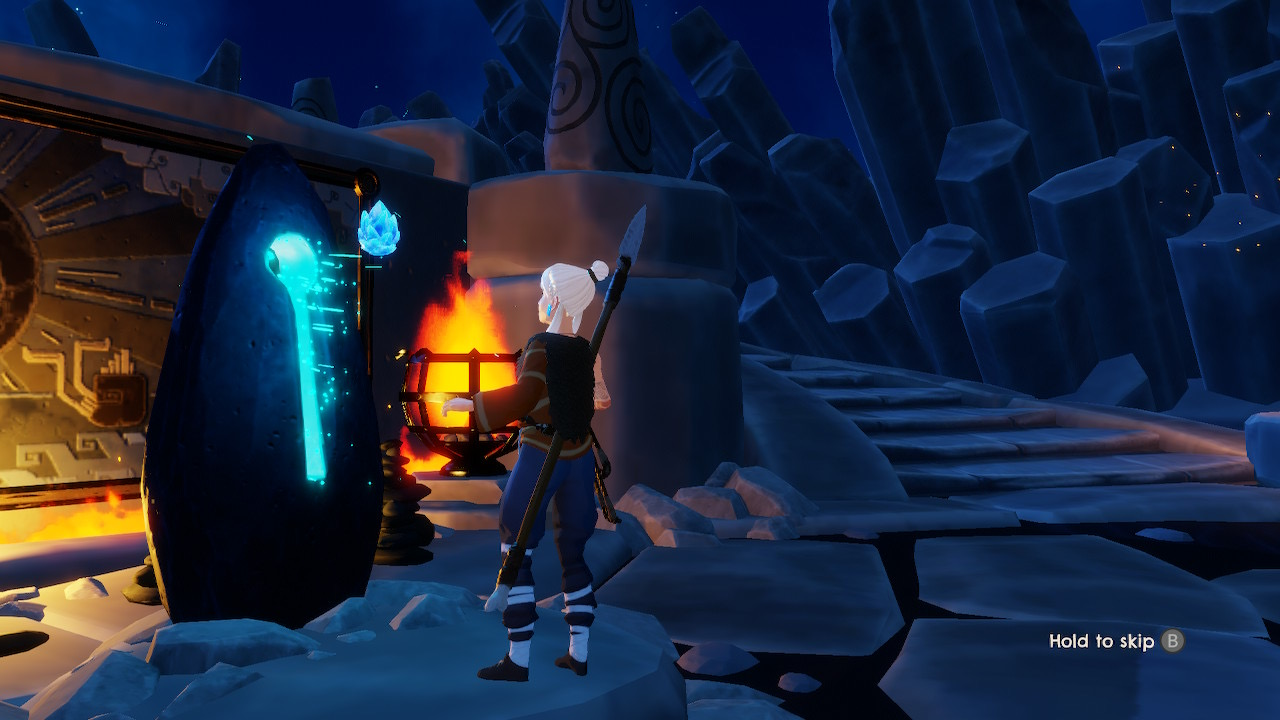
The narrative from this point forward is told mostly through environmental storytelling, broken poems, and written memories of long-dead voyagers who used to call the mysterious islands home. Major beats are told through ornate hieroglyphs, but the majority of the narrative is gathered through exploration alone. The story itself, while not groundbreaking, kept me on the hook for the entirety of my playthrough. I found myself going well out of my way on numerous occasions simply to learn more of these deserted islands and the fate that befell their inhabitants.
I could go into more detail on story specifics, but its greatest strength is in its organic discovery. Suffice to say, if you enjoy games that reward player exploration with lore, Windbound may be right up your alley.
A new horizon
When booting up Windbound, players are greeted by a shot of the sea with an island in the distance. This peaceful imagery is accompanied by equally calming music that sets an atmosphere somewhere between The Legend of Zelda and Final Fantasy. In a game about survival and philosophical introspection, it’s surprisingly calming. Sailing in particular can be downright soothing at times. Taking to the waves gives players a moment to digest the story, plan their next moves, and wind down from the challenge of survival on land.
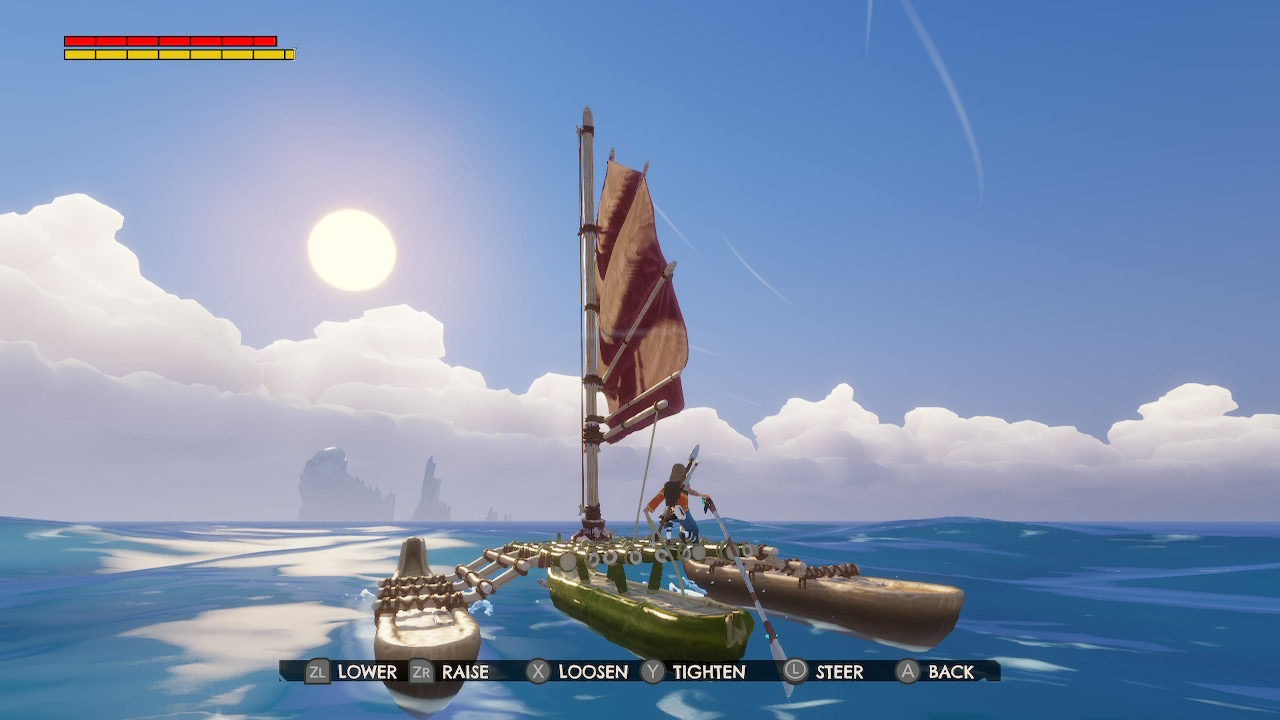
The procedurally generated world feels alive and organic, with creatures roaming the islands and storms moving through dynamically. I appreciated how its summer vibes are off the charts – it would be a perfect pick to play while unwinding after a day at the pool or beach.
In terms of visual fidelity, Windbound is absolutely gorgeous. I’ve seen some compare its visuals to Breath of the Wild, and that is indeed a fair comparison. However, having played it, I find a more apt comparison to be Sea of Thieves. In my experience, the moment to moment performance is quite stable, with few frame drops. In fact, I noticed frame spikes instead of drops. Occasionally, when sailing or climbing towers, the frame rate can briefly jump as high as what felt to be nearly 60 frames-per-second.
The audio side of the presentation may very well be my favorite aspect of the game. The sound of waves lapping against the shore, accompanied by birds singing and animal noises transported me mentally to the warm shores the visuals portrayed. The music was also incredibly good. It never came off as overbearing, and the rattling acoustic beats that grow into a full on melody when enemies or prey are nearby regularly put a smile on my face. The music during certain difficult sailing sequences in particular is hauntingly good – I can’t say anything beyond that without risking spoiling one of the most interesting parts of the game, but it’s a track that I’m hoping gets officially released online soon.
Pillaging and wayfinding
While Windbound is an absolute stunner visually and its narrative is engaging, the gameplay is the star of the show. The game is a rogue-like at its core, with players being thrown into the wilderness with nothing but a small knife, a magical oar and their wits to get them through. As players learn and grow through exploration and experimentation, they have to grapple with surviving encounters with dangerous creatures, rough seas and the effects of starvation – all with perma-death on the line.
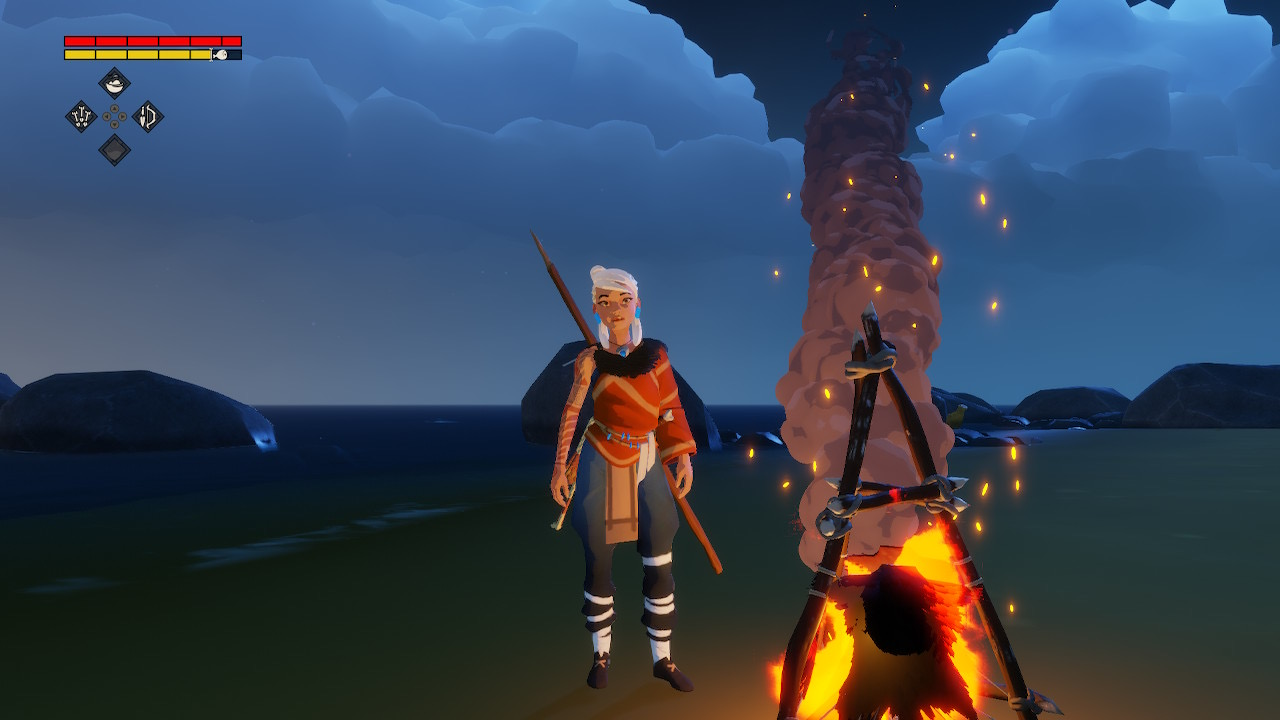
The main gameplay loop has players sailing from island to island, scrounging up resources and crafting equipment to help them better survive and thrive, while keeping an eye on the horizon for one of three stone towers which are crowned with large, crescent-shaped structures. Finding these towers rewards players with a hint of the story and a large number of an ethereal currency known as Sea Shards.
Once three towers have been found and activated, passage to another realm is granted where more of the overarching story unfolds. In this realm, players can spend their accumulated Shards on permanent upgrades that carry over between runs, as well as swap upgrades in and out. These upgrades grant the player with game-altering power-ups such as adding a bleeding damage effect to creatures the player attacks, a spear that never breaks, and even the ability to earn exponentially more Shards at a time. When players die, they start back at chapter one, but get to keep these upgrades along with all accumulated Sea Shards and whatever was in the “held” section of their inventory.
In most survival games, the best strategy for survival is to build a home base and essentially turtle until you’re strong enough to venture out and explore. In Windbound, your boat is your home base, so you’re always on the move. I found this simple twist in the survival formula to be incredibly refreshing during my playthrough. It led to me taking more exploration risks that I normally wouldn’t until I was completely geared up in other games. However, in taking your home base with you, you run the risk of losing everything if you forget to secure your boat before disembarking. It’s a double-edged sword that makes your boat as much of a boon as it is a liability.
Combat in Windbound has a jab-and-move type of flow. Kara has a stamina bar that depletes from sprinting, attacking and dodging, and it shrinks the longer players go without eating. The movement feels responsive, but the actual attacks can feel a bit stiff. So much of the game has a story-relevant explanation, even the currency, so I’m unsure if the rigid attacks are another instance of this. Kara isn’t a brawler, she’s a Voyager, and she sails with the skill of an unquestionable expert. However, her combat skills aren’t the sharpest. This logic is betrayed by her nimbleness when dodging and sprinting, but everything else in the game has trained me to expect a lore-based reason for every mechanic, so it’s best left to each player’s personal interpretation.
Storm squalls and choppy surf
On a technical level, most of the Windbound is smooth sailing, but there are a few issues that muddy the water. Most of the issues I encountered were minor and could easily be patched, however there are a few more severe issues that hurt my ability to recommend the game fully – at least at launch.
When digging through Kara’s inventory, the border that highlights the item that’s currently selected is pretty thin, and its coloring blends into the item frames easily, making it easy to lose your place. It’s not too bad when playing in TV mode, but it can be bothersome in handheld mode. Also, there doesn’t appear to be a way to drag and drop items or swap them with each other. Not having those options makes item management a chore at times, especially when your inventory is full and you want to move an important item from your inventory to the held section in case you fall to an enemy of the elements. In situations like that, the only option is to drop an item from your held section onto the ground, move the item you want from your inventory into the held section, and then pick the dropped item back up. It’s incredibly tedious, and by the time I reached the later chapters it had become outright frustrating.
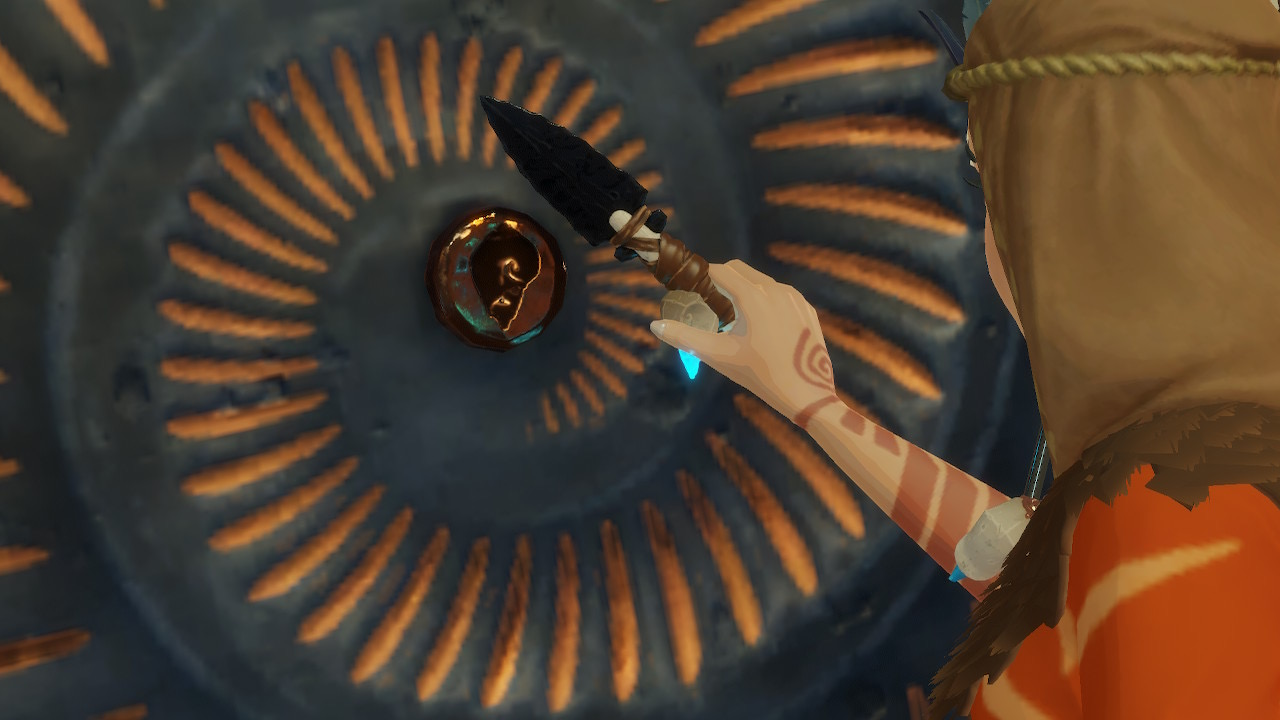
Not being able to set waypoints can make finding your way around a bit confusing, especially with the draw distance not being very far when rendering distant islands. Also, it can be unclear on how to build certain ship parts that require other parts to be built first. For example, to build a hull, you first need to build a deck and attach the hull to it, however, the crafting menu’s text doesn’t state that, nor does the crafting silhouette that’s used to place some crafted items.
When sailing, the physics can occasionally fail – particularly in rough seas, causing the boat to slow to a crawl at best, while stopping on a dime and jack-knifing at worst. Either instance causes the boat to lose all momentum, which can be disastrous when near rocks and coral. Of all the issues I had with the game, the inconsistencies with the water is the one I can personally give the biggest pass to though. Programming water is an absolute bear, and it works incredibly well most of the time. Just a bit more fine-tuning can get the seas of Windbound ship shape!
My final issue, however, is one that I can’t excuse so easily. During my playtime, I experienced six complete crashes to the Switch’s home screen. All six crashes were in the later chapters of the game, and they each occurred for different, unrelated reasons. The crashes cost me progress and time, and hurt what was otherwise a wholly enjoyable experience.
Sailing home
In spite of its flaws, Windbound captures the survival formula excellently. Early on in my playthrough, I had a close call that won the game a special place in my heart. Night had fallen, and I was starving to death while fighting a boar. With no stamina and just a sliver of health, I was able to finish off the creature, quickly eat it raw and live to fight another day. I felt the emotion of the fight as both myself and the boar were fighting for our very lives. One of us wasn’t walking away from this encounter, and I made certain it wasn’t me. With that encounter under my belt, I felt emboldened and encouraged, which led to me pushing my limits more and more. By the time my voyage with Kara concluded, I felt like a master of the earth and sea, but there’s still so much I haven’t seen, and so much still out there to discover!
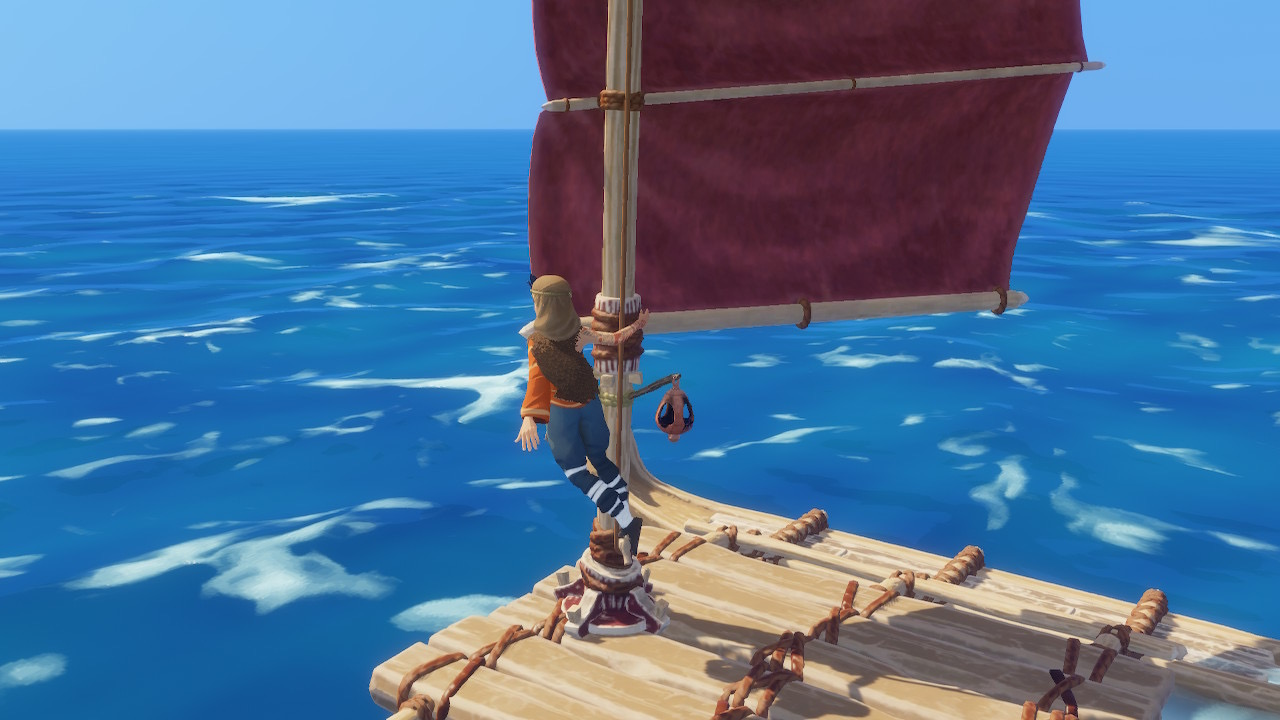
This tropical adventure has a lot of heart and charm; it’s gorgeous, interesting and an absolute blast to explore. However, crashes and glitches really hurt my ability to recommend it in its current state. If it weren’t for the amount of times my game crashed and my boat just stopped working, I wouldn’t hesitate to recommend this game to anyone who likes any combination of open world, survival, or rogue-like games. As it stands though, the most I could honestly recommend would be to wishlist the game on the eShop until it gets a few more updates. I hope patches to fix the issues I experienced come soon, because Windbound is a gem that needs just a bit more polish to truly shine!
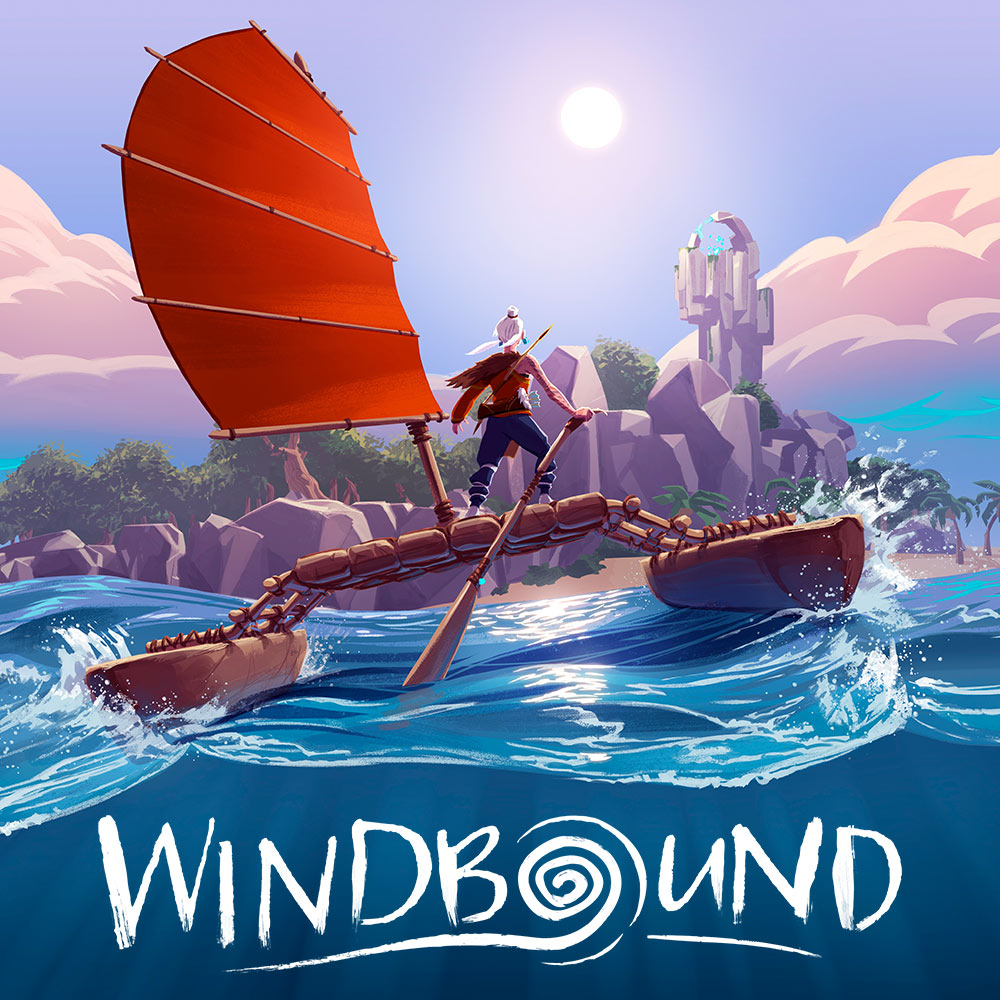
System: Nintendo Switch
Release Date: August 28, 2020
Categories: Action, Adventure
Publisher: Koch Media
Developer: 5 Lives Studios


